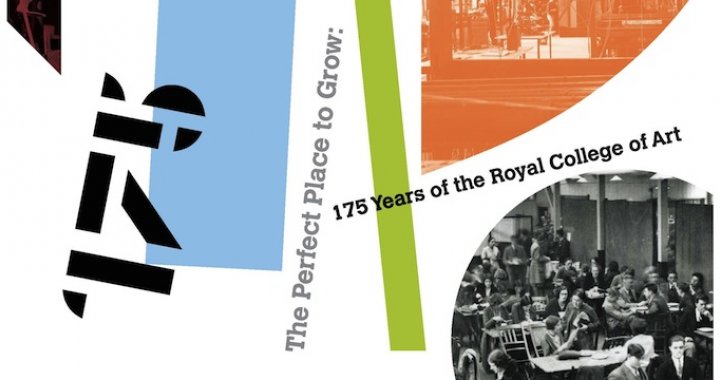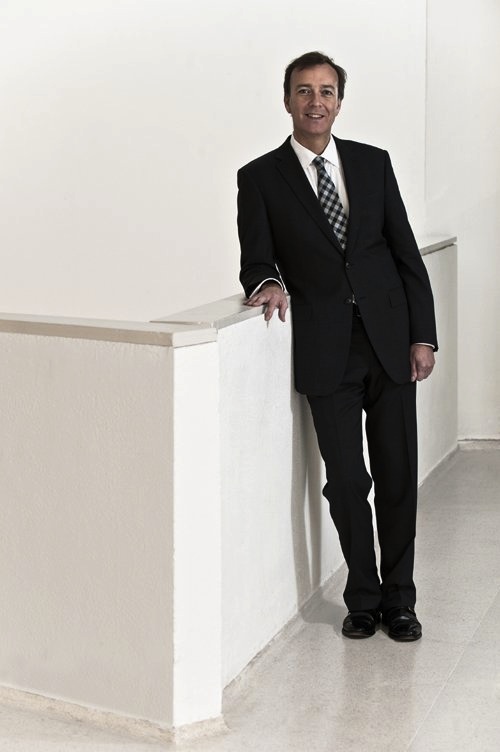
Interesting things typically happen in the intersections
Juste Kostikovaite
05/02/2013
Paul Thompson is the Rector of the Royal College of Art, the world’s oldest art school in continuous operation, and the only art and design university in the UK operating exclusively at a postgraduate level. Prior to 2009, Paul was Director of the Smithsonian’s Cooper-Hewitt, National Design Museum in New York (from 2001–9), and Director of the Design Museum in London (from 1993–2001). He is a Trustee of the Victoria and Albert Museum and is on the Ashmolean Museum Board of Visitors. He is also a member of the Programme Advisory Committee of the Wellcome Collection, Wellcome Trust.
You have been a Dean of the Royal College of Art for three years now. What are your goals for 2013?
My goal for this year is to watch really carefully how the new programmes will be introduced. It is the first time that the Royal College of Art (RCA) has introduced three new programmes in one year. Last year, there were three new courses introduced – courses in critical writing and interior design, and information experience design and service design, among others.
Certainly, we need to make sure that these changes will be reflected within the Academic preoccupations and research preoccupations in the RCA, and we will be looking carefully at Fine Art with our new dean – Ute Meta Bauer. What interested me was her vision of maintaining the intellectual nucleus of the different programmes, in terms of sculpture and print-making, but also her facilitation of a trans-disciplinary approach to try and introduce the element of performative art. We see a lot of students now wanting to work in the performance field, so we are thinking about how the college can catch-up and embrace that interest, and how we can develop it into a Masters Programme. It will be interesting to see what Ute Meta Bauer will be doing, in terms of sculpture as a social dimension. Public art will bring a different type of student into the RCA. The RCA has always been seen as working with sculpture in a traditional way, and I don’t want to lose that association, but I think that fine art is going to be engaged with a new activity – the moving image – so we need to prepare for those programmes.
What will happen within the animation and visual communication programmes?
The moving image is already within the visual communication programme, but when we talk about the moving image in terms of gallery-based art, the two schools will have to share a lot of equipment, because nevertheless, visual communication and fine art are two different schools.
It is interesting that it seems as if the RCA focuses on its departments in terms of type of media, whereas in Goldsmiths, these divisions are seen as redundant. Is this because of the connection with craft?
Yes, I think so. I think it was not a fashionable way of doing pedagogy over the last 20 years. But now I think that time is on our side, and there is a return to technique and craft being points of interest again. What is also important is criticality: when one defines a programme in a certain way, this also demands that one questions it. It is interesting that in the RCA's photography and printmaking departments, you have to interrogate the boundaries that you occupy, and that’s probably a mostly intellectually satisfying thing – that your work is hanging in a big art hangar, and that you have been awarded a MFA and have undertaken that interrogation. And I think that this will increase when we have a ceramicist and jewelery campus in Battersea, near the Fine Arts department.
How do you see the RCA positioning itself among other art schools?
If you compare the Photography programmes at the RCA and at the Yale University School of Art, what is unique about the RCA is that it is post-graduate only, which means it is much more research-focused – it can tick off the boxes of having the top one or two programmes in the world, whether in product design, fashion, architecture or fine art. It scores consistently high in international rankings in a wide array of different subjects, which means that other places may be great in, say, fashion, but they do not score as highly across such a wide array of fields. The place is small and very concentrated, which also influences how we work. We are an international community, but being in London also informs us in how we teach, how we think. London has changed dramatically during the last decades, and it means that we are teaching in a very interesting environment.

When you came back to London from New York, what were the most striking differences that you noticed?
The speed of everyday life, definitely. One could say that, in the anthropological cultural sense, there is an impatience and appetite and enthusiasm for novelty which is clear in New York, but which is toned down in London. People are impatient in 20 seconds in New York, while in London, it might be 20 minutes. People do not take themselves seriously in London, but people take themselves terribly seriously in New York, where it is all about self-presentation. London has a much more self-deprecating attitude, which maybe is a European trait. Having said that, I felt that New York had an amazing contemporary art scene; there, it was easier for me to discover artists that I had never heard of before, and the accessibility of their shows is greater than in London. I was surprised when I came back to London and saw that a lot of South Asian, Asian and Chinese were not yet discovered, and we had to wait a couple of years before the Parasol Unite Foundation put on an exhibition. There was not such a good curatorial eye in London as New York had had.
What do you think about the post-colonial and globalisation discourse that is going on everywhere – in Goldsmiths, the RCA and other major art schools? For instance, everyone is reading Hannah Arendt and Gayatri Spivak.
It is like institutional critique – it is an interesting thing. The trauma of colonialisation is still quite present, so I don’t think it is going to settle down anytime soon. We were told that the sun would never set on the British Empire. Particularly, when we are predicting the exact time that that Empire will end. Or that the “American century” is going to end in 2025, which I read in a book recently. So, now we live in an age in which we can predict the end of an empire and we can define it; we talk quite openly about it, we talk about the BRIC and PIGS nations, we have world rankings. I don’t know whether the Victorians thought that way. I think that they were exceptionalists, who thought that the British nation was an exceptional one.
Please comment a little bit about the project that you were involved in – in which product design was created for that part of the world's population that lives on less than one dollar per day.
Here we are talking about reverse innovation. We are taking low-technology, but high-impact, ideas from the developing world to the developed world. You think to yourself – how on earth didn't we think of it before? Like in agriculture – to not overuse fertilisers and so on – we have forgotten all that, almost as if we never even knew these simple things. The West is desperate in finding examples that could help us lead a more sustainable life. Air-conditioning is a good example – in developing countries, the buildings are often naturally ventilating, and thus cool. 2000 years ago, houses were built very mindfully in order to allow the air to re-circulate and displace the air that had been heated. More architects in the West are looking at those kinds of buildings now, and they do not want to have all these “boxes” anymore.
What do you think about Dyson’s remark about studying French lesbian poetry? I though that the vacuum cleaner is actually a very feminist gadget – in fact, it once again increases the amount of domestic work to be done, rather than decreases it.
I think that what he is saying, as a successful manufacturer, is that we need more engineers. But if you talk with him privately, he would completely understand that the RCA needs engineers working alongside writers, jewelers and curators. The most interesting things typically happen in the intersections of science, technology and art; these are the things that typically excite us as human beings and advanced our civilization.
I'm still wondering where curating stands in light of that remark. I thought it stood closer to lesbian poetry. Maybe curatorial students feel fragile.
Yes, maybe it causes a discomfort which is endemic in the humanities. It think we also feel threatened because of the fact that the government has removed all funding for humanities undergraduate programmes, and that these programmes now have to stand on their own and have to survive from student fees only. And the irony is that the politicians who made these decisions, studied humanities themselves. That is a double blow (laughs). I studied humanities, and I think that the value of knowledge for knowledge’s sake, without any end-goal of creating wealth, is important. I read an interesting paper which postulated that universities are the pot where businesses take ideas but, interestingly enough, wealth is not the purpose of learning nor of having a university education.
There’s a tendency towards life-long learning. What is your position on this?
It will have to happen. We were thinking about it before the 2008 market crash, but now education has become a bit of a luxury. As soon as we come back out of the recession, we will remember that the most advanced societies are those which are going to be constantly pulling in and out within the knowledge economy. Particularly, when everyone will be expected to have two to three completely different careers and portfolios. Also, regarding the age of retirement – in the UK it's 65 years, whereas in the US, we don’t have these limits. Regarding exchange programmes – and certainly in industrial design engineering – we are launching exchange programmes with universities in Tokyo and New York; we want to move towards doing more exchanges.